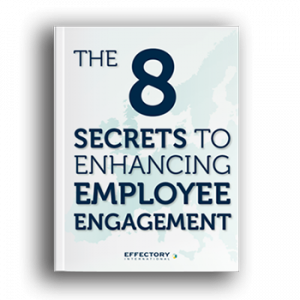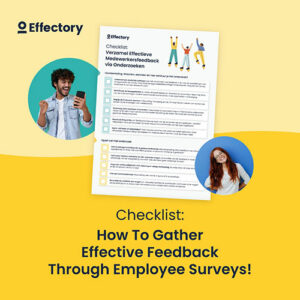In the penultimate article in our series the 7 secrets of the best employers we discuss how the best employers implement social innovation and how organisations can be successful at implementing social innovation.
Best employers secret #6: Implementing social innovation
What do I mean when I say social innovation?
Social innovation is an extremely broad term, but we use it here to refer to innovations that are created from within organisations. Such innovations are often created by employees and help organisations to create a competitive advantage, and to become leaders in their field.
The 8 Secrets to enhancing employee engagement
Get your your copy of the Report: The 8 Secrets to enhancing employee engagement
DownloadHow organisations can foster social innovation
How to approach social innovation is often a challenge itself. A good place to start is by finding a convenient time to ask employees: what can we do to work better and faster, in order to become more cost effective and client focused?
No one knows the answer to the above better than your organisation’s own employees. The people that turn up for work every day, come rain or shine, know what will and won’t improve the organisation. Social innovations are not always on the magnitude of re-inventing the wheel, and can be relatively small things that employees have picked up from their years of experience within the organisation.
When employees become more involved in innovation, the results can be truly miraculous. When, instead of external parties, employees are consulted and asked about how to create innovation, it creates enormous energy and enthusiasm within the organisation. By consulting employees, it also helps create commitment from employees to creating innovation within the organisation, which in turn helps increase employees’ feeling of fitting in.
The complete 7 secrets of the best employers
Setting boundaries
One of the most important aspects for successfully implementing social innovation, is that organisation’s set the right boundaries. Reactions from HR directors are often at best, lukewarm to social innovation.
In one of our workshops, an HR director stated that she wasn’t overly keen on social innovation. She stated that she had once gathered a group of employees together with the aim of looking into the organisation’s policies. At a certain point she said: “And then I put them together…and they came up with nothing!”
The following conversation then followed:
Question: “Yeah… could employees volunteer themselves to talk about the issue?”
Answer: “No, no, no, that’s not how it works. They were centrally identified and summoned.”
Question: “Was the topic somewhat manageable for employees?”
Answer: “Well… it was about our long-term policy… because, as management, we hadn’t worked it out ourselves.”
Question: “And was there an atmosphere where employees felt free to take risks and come up with their own ideas?”
Answer: “Of course,”… Although the doubt in her voice was clear.
And finally: “Were there clear guidelines? Was it clear what requirements a solution had to meet?”
Answer: “No, there weren’t any.”
Soon it became clear that there lacked boundaries for employees, and it is something that we regularly come across. Without creating clear and well defined boundaries for employees, it’s unrealistic to expect employees to create innovations.
How to gather feedback from your employees
The definitive checklist for creating your employee engagement survey.
Download
